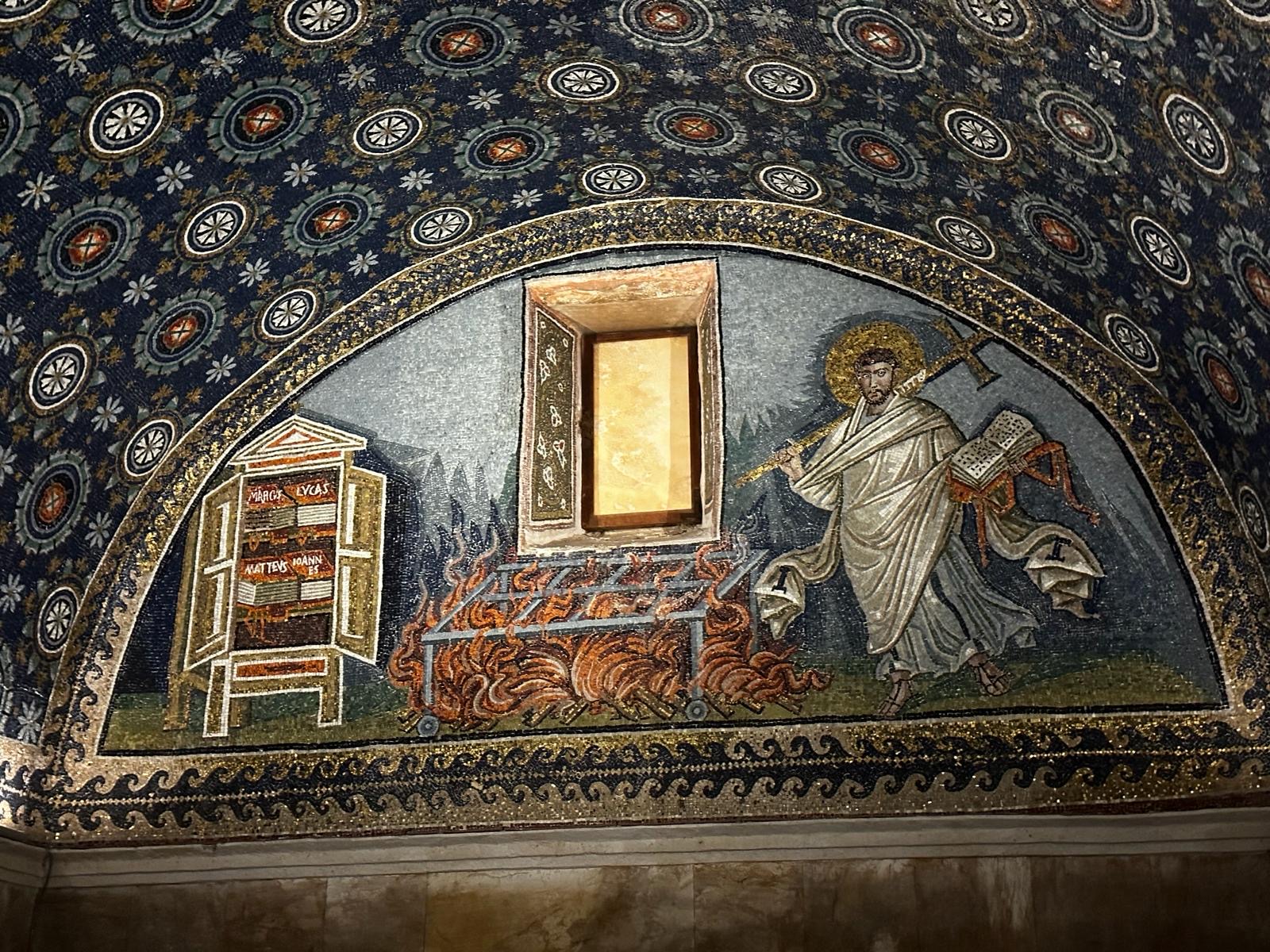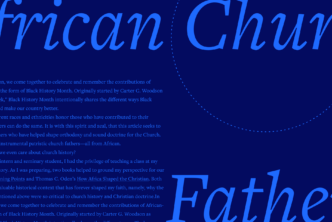Shuffling along the dusty paths of ancient Israel, travelers and residents would inevitably stumble upon piles of rocks. A particular pile near Gilgal, however, showed evidence of being constructed with purpose.
The mighty warrior Joshua had commissioned the creation of that rock pile after the people of Israel had arrived back in their promised land:
In the future when your descendants ask their parents, “What do these stones mean?” tell them, “Israel crossed the Jordan on dry ground.” He did this so that all the peoples of the earth might know that the hand of the Lord is powerful and so that you might always fear the Lord your God. (Josh 4:21–22, 24)
We are forgetful people. Surely you have walked into a room and forgotten why you did so. Am I the only one who will be introduced to a new acquaintance only to forget her name within moments? Our brains need help if they are to retain information long-term. Joshua intuitively knew that a physical monument associated with a specific story would help his people remember a valuable truth. Countries do the same—just think of a capital city’s innumerable memorials of national heroes. And through the centuries, the church also has found a way to remember the mighty works of God.
It’s called the church calendar.
Seasonal “rock piles”
The church calendar, used primarily by liturgical denominations worldwide, teaches the life of Christ more or less chronologically. The seasons of Advent, Christmas, and Epiphany focus on the early years of Jesus, while Lent, Easter, and Pentecost help us reflect on his final days and the coming of the Spirit. Altogether, these major emphases take up only about five months of the calendar year, from December to April.
Even the lowest of low-church evangelicals are at least vaguely familiar with the major church seasons I just mentioned. But unless you worship in a denomination that follows the Book of Common Prayer or another lectionary, you may not realize how Scripture readings in each Sunday service progress through the Gospels. And if a new season begins on a weekday, such as Ash Wednesday or Ascension Thursday, churches typically hold special services on those “holy days” (from which we get our word “holiday”).
By retelling major events from Jesus’s life every year, church leaders could catechize—or educate—the masses. They needed ways to reinforce biblical truth to believers who did not have printed Bibles of their own. Through artistic renderings of Bible stories on the walls of churches, commissioned statues of biblical heroes, and the rhythmic retelling of Christ’s life in the calendar, the church came to know their history, their faith, and their God.
Daily “rock piles”
Weekly reminders repeated annually gave anchors to the faithful with which to ground their trust in God. But daily memorials to their heroes immersed the church in their shared history. Feast days, as they came to be called, singled out particular people deemed worthy of celebration. And not only biblical exemplars were—are—honored. Yes, as with the liturgical seasons, the church continues to honor the saints of old on their feast days.
Do the names Patrick and Valentine sound familiar? Ask your teens what they know about them. “I know that Patrick went to Ireland and preached, and the Irish use it as an excuse to drink,” my teen told me, with a twinkle in her eye. “Valentine died on the fourteenth, but I don’t know what he did to become a saint.”
What little my kids know of these two famous saints came from us, her parents, not our evangelical church. But while we parade along green-dyed rivers and buy chocolates for our loves, ancient celebrants honored these men for their faithful lives—and deaths. And they are two of hundreds of saints honored by the church every day of the year.
The church’s memories of God’s faithfulness
By this point, you may be wondering if I’m encouraging evangelicals to adopt Catholic or mainline Protestant practices. We know, of course, that all believers are saints (Greek hagios, “holy ones”), a name Paul used to identify those in the churches he was writing to (Rom 1:7). Why, you may be thinking, should we give special attention to certain people?
Think of it as a way to see the work of God through the ages.
In his recent book, The Wood Between the Worlds, Pastor Brian Zahnd said, “The loss of memory regarding the martyrs is a particular form of Protestant poverty.”1 When, in a rightly motivated effort to focus more on Scripture, Protestant Reformers turned away from traditions that seemed too Catholic, they unintentionally beggared future generations of their spiritual heritage.
Recognizing heroes of the faith who have gone before us is not a so-called Catholic practice—it’s a Christian practice. I’ll give you two reasons all Christians can benefit from remembering the saints.
1. The communion of the saints
The people celebrated in the church calendar are found in the Bible and church history: all of them are part of the “great cloud of witnesses” to which we also belong.
Some feast days celebrate people like John the Baptist, the twelve apostles, and Mary the mother of Jesus. (She actually has more than ten days per year dedicated to her!) Others honor martyrs and other public figures throughout church history.
2. Remembering the faithful is an ancient tradition
Long before the church split into separate denominations, theologians and pastors were extolling the courage and faithfulness of common people who had valiantly given their lives to Christ. Some of them gave their lives for Christ, as martyrs. As their stories became known and verified, the tale of their faith would be told on the anniversary of their martyrdom.
For Christians living in a pagan culture, constantly enduring suspicion, skepticism, oppression, or persecution, stories of valor, faith, and love inspired them to endure. Those lives became metaphorical “rock piles”—memorials of God’s faithfulness in the past to encourage those in the present.
Remembering through story
The great Augustine himself understood the value of telling and retelling the stories of the martyrs and saints:
Now this kind of festival of all the glorious martyrs has been instituted in the Church so that those who didn’t see them suffering may be led by faith to imitate them, and may be reminded of them by the festival. It’s probable, you see, that what wasn’t repeated by an annual commemoration would escape people’s minds altogether.2
Martyrs in particular were revered by the early church. Those who sacrificed their lives for the gospel, they felt, had proven their loyalty to Christ beyond doubt. “You know the place in the Mass where the martyrs’ names are recited?” Augustine asked, rhetorically. “The Church doesn’t pray for them. Yes, the Church is quite right to pray for the other departed who have fallen asleep; but for the martyrs, it does not pray, but instead commends itself to their prayers.”3
My recent studies have immersed me in the earliest centuries of Christianity, teaching me about dozens of church fathers and mothers. Countless cathedral walls and ceilings bear the images that tell their stories. Thousands of pages have been written of them. And tucked into Augustine’s sermons, we hear of the faith and courage that turned everyday believers into extraordinary role models.
Vincent
Augustine preached on January 22 on Vincent, a deacon of Saragossa, Spain, who was martyred in Valencia, AD 303, in the persecution launched by the Roman emperor Diocletian. Vincent was tortured by fire; his body was then dumped into the sea weighted down by a large stone. But his body miraculously washed up to shore, and fellow believers retrieved it for cleaning and veneration. Augustine saw this as God’s special care for his beloved’s human flesh until the resurrection would come.
Perpetua and Felicity

Perpetua, a twenty-two-year-old woman from a wealthy family in Carthage, became a Christian and refused to recant even while still nursing her young son. She and her slave, Felicity, eight months pregnant, were arrested and sentenced to the arena.
Felicity desperately wanted to be with her fellow Christians when she died, but pregnant women were not allowed to be executed because their unborn children belonged to the fathers. Her companions prayed she would give birth early, and when the baby arrived at eight months, they considered it God’s intervention. Together, the women faced the terrors of the arena.
Their story is found in Perpetua’s diary, which was published with an appendix telling of their martyrdom on March 7, 203. The women were revered in the early centuries for their unusual courage and faith. Around two hundred years after their deaths, Augustine lifted them up to the church as examples to follow:
What, after all, could be more glorious than these women, whom men can more easily admire than imitate?
So the dragon was trampled on by the blessed Perpetua’s chaste foot and victorious tread, when the ladder by which she would go to God was set up and revealed. Thus the head of the ancient serpent, which had been the ruin of woman as she fell, was made into a step for woman as she ascended.
They have gone ahead of us, they tower over us like giants. If we are not capable of following them in action, let us follow in affection; if not in glory, then certainly in joy and gladness; if not in merit, then in desire; if not in suffering, then in fellow feeling; if not in excellence, then in our close relationship with them.4
Lawrence

On August 10, Augustine was known to preach about Lawrence, a young deacon in Rome: “The Roman Church commends this day to us as the blessed Lawrence’s day of triumph, on which he trod down the world as it roared and raged against him.”5
Caught up in the emperor Valerian’s persecutions AD 258, Lawrence’s execution was enough to ruin the smell of barbeque:
A gridiron was brought, he was roasted on it. And he is said to have borne those torments with such calmness, that there was fulfilled in his case what we heard just now in the gospel, “In patience you will possess your souls.”
Augustine is here referencing Luke 21:19. He then quoted Lawrence’s surprising—and morbid—sense of humor:
Finally, when he was burnt on one side, scorched by the flames, but calm in his endurance, “It’s now cooked,” he said, “all that remains to do, turn me over and eat.”6
In a different August 10 sermon, Augustine emphasized Lawrence’s faith:
How, indeed, could the blessed Lawrence have been unafraid of the fires applied to him outwardly, if he hadn’t been on fire inwardly with the flames of charity? That, my brothers and sisters, is why the glorious martyr was not in dread of the atrocious heat of the flames on his body; it’s because he was on fire in his mind with white-hot desire for heavenly joys.”7
Hearing the stories of valor, suffering, and victory for Christ benefited the church who lived in safer times. Christ was worthy of sacrifice, Augustine was saying. Look at what your forefathers in the faith were willing to endure for his sake. Shall we not remember them?
A calendar for today
We are forgetful people. Repetition has been proven an effective barrier to our porous memories.
As the church calendar flips over every year at Advent, we begin again to center ourselves on the life of Christ, learning his ways again, participating in the feasts and fasts until we reflect on the cross and rejoice in the resurrection.
As the seasons remind us of our Savior, so can feast day memorials bolster the faith that God gives to each of his children. A simple online search will reap a number of calendars listing official saints’ feasts for each day of the year. The Visual Museum of Women in Christianity offers a digital library of freely downloadable images featuring female saints and martyrs.
Perpetua, Felicity, Lawrence, and Vincent were everyday people who chose Christ instead of their pagan culture. As God empowered them by his Spirit, so he empowers us today.
The body of Christ spans continents and centuries. In the words of Augustine, who kept the memory of our earliest faithful alive for his generation: “We are uniting ourselves to our brothers and sisters there in one body, under one head, absent indeed in body, but still present in spirit.”8
Further resources
The Church Year at Home: A Practical Guide for Using the Church Calendar to Frame Time with Our Kids
Regular price: $7.80
Holy Days: Meditations on the Feasts, Fasts, and Other Solemnities of the Church
Regular price: $9.09
Related articles
- The Definitive Guide to Christian Denominations
- Why Christians Should Follow the Church Calendar
- 4 Benefits of a Preaching Calendar
- Brian Zahnd, The Wood Between the Worlds: A Poetic Theology of the Cross (Downers Grove, IL: InterVarsity Press, 2024), 48.
- Augustine of Hippo, Sermons 273–305A: On the Saints, ed. John Rotelle, trans. Edmund Hill, The Works of Saint Augustine III/8 (Hyde Park, NY: New City Press, 1994), 324.
- Augustine, Sermons, 284.
- Augustine, Sermons, 72.
- Augustine, Sermons, 316.
- Augustine, Sermons, 313.
- Augustine, Sermons, 320.
- Augustine, Sermons, 324.





